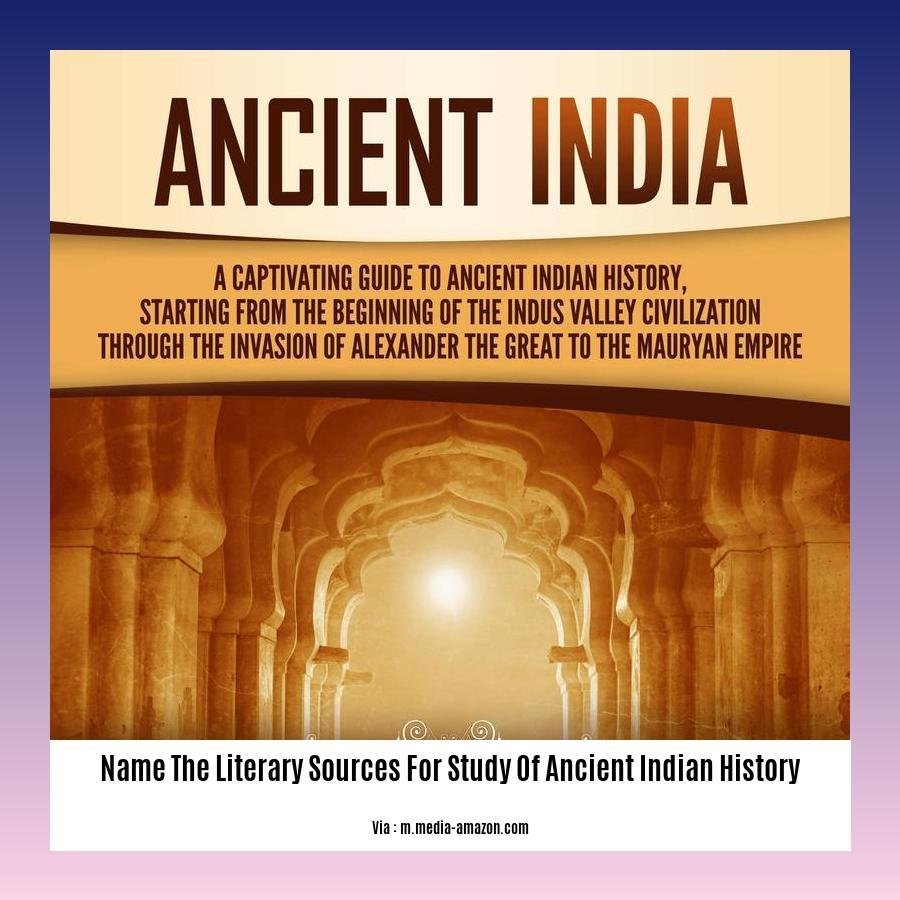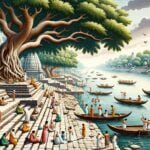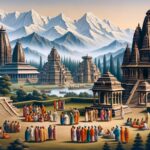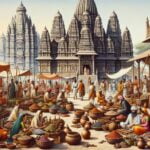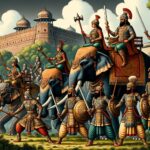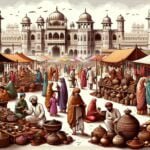Hey there, history buffs! Get ready for a mind-blowing trip as we dive into the awesome world of old-timey India. We’re gonna dig into the books and records that tell the tale of this amazing place, from epic poems to ancient carvings. These things are like the keys to understanding how this region became the incredible place it is today. We’ll explore the secrets of society, culture, and even the big shots who ruled back in the day. So buckle up and get ready to uncover the hidden gems of ancient India!
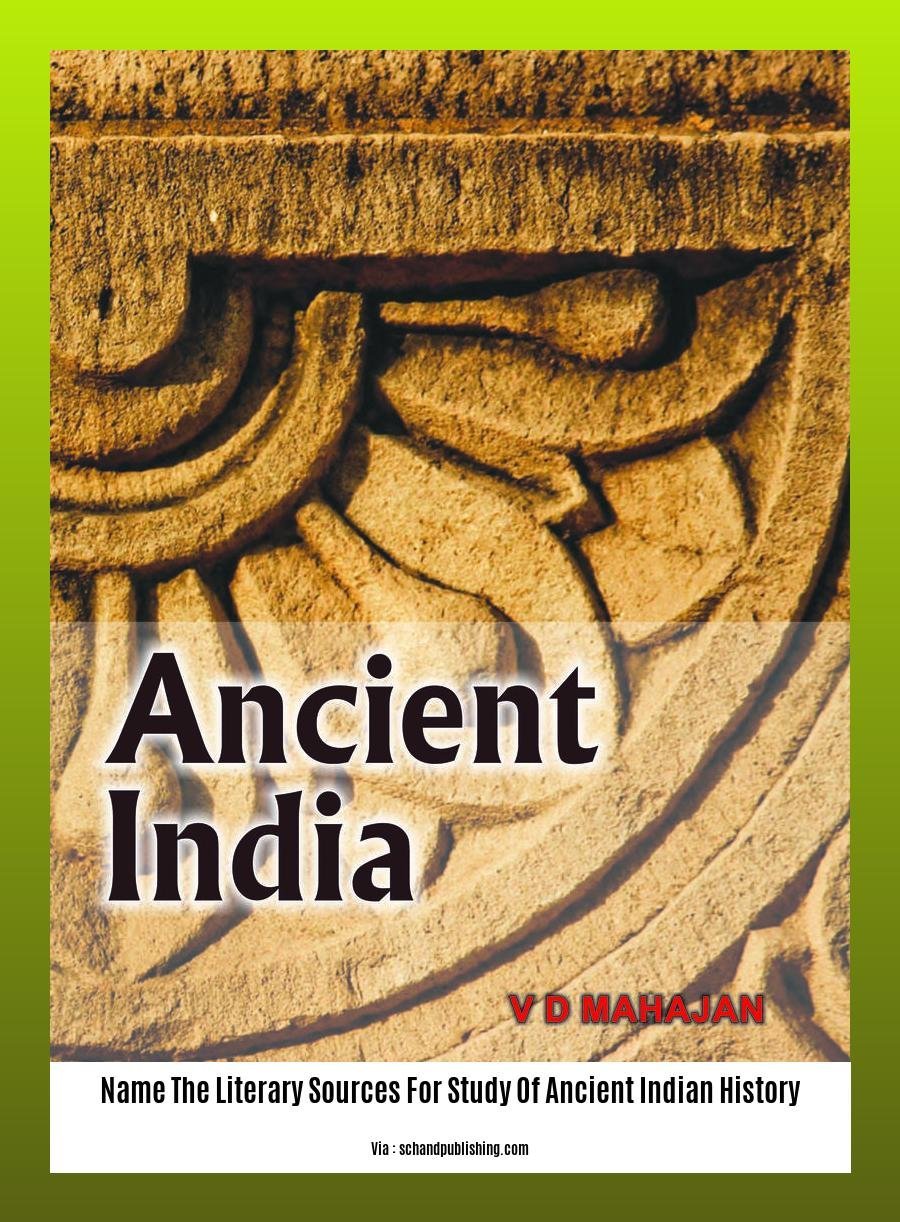
Name the Literary Sources for Study of Ancient Indian History
Imagine embarking on a journey through the captivating tapestry of ancient India, where each thread unravels a story of its rich past. Delving into the literary treasures of this era, we unlock a window into a world of religious fervor, cultural vibrancy, and political intrigue.
Pillars of Religious Wisdom
The Vedas, like ancient hymns and rituals, reverberate with the echoes of spiritual beliefs. The Puranas, tales of gods and goddesses, paint a vibrant canvas of mythology and folklore. The Ramayana, an epic tapestry of virtue and struggle, narrates the saga of Lord Rama, an embodiment of righteousness. And the Mahabharata, a colossal literary masterpiece, recounts the epic battle between the forces of good and evil.
Through the Lens of Foreign Eyes
Like intrepid explorers, foreign travelers like Hiuen Tsang and Megasthenes ventured into the heart of India, leaving behind invaluable accounts of their encounters. Hiuen Tsang’s detailed observations shed light on the people’s customs, while Megasthenes’ firsthand experience with the Mauryan court provides a glimpse into the society’s intricate workings.
A Tapestry of Literary Threads
Biographies, like intimate portraits, paint the lives of influential figures. Epics, thrilling tales of heroes and legends, capture the spirit of the people’s imagination. Plays, like windows into social and political life, reflect the multifaceted nature of ancient Indian society. And philosophical treatises, like beacons of wisdom, illuminate the spiritual and ethical landscape of the era.
Table of Literary Sources for Ancient Indian History
| Literary Source | Type | Description |
|---|---|---|
| Vedas | Religious texts | Hymns, rituals, and philosophies |
| Puranas | Epics | Narratives of gods, goddesses, and kings |
| Ramayana | Epic poem | Journey of Lord Rama, an embodiment of virtue |
| Mahabharata | Epic poem | Battle between the Pandavas and Kauravas |
| Hiuen Tsang | Foreign traveler account | Observations of Indian people and customs |
| Megasthenes | Foreign traveler account | firsthand experience with the Mauryan court |
| Biographies | Literary works | Life and deeds of prominent individuals |
| Epics | Literary works | Exploits of heroes and legends |
| Plays | Literary works | Insights into social and political themes |
| Philosophical Treatises | Literary works | Spiritual and ethical concepts |
- Delve into the world of Pokémon with the ancient origins card list, capturing the essence of the past.
- Dive into the fascinating past of ancient Egypt with a glimpse of real ancient Egyptian artifacts for sale, embodying the allure of a bygone era.
- Explore the marvels of history through a journey to the ten wonders of the ancient world, unearthing the grandeur and splendor of forgotten civilizations.
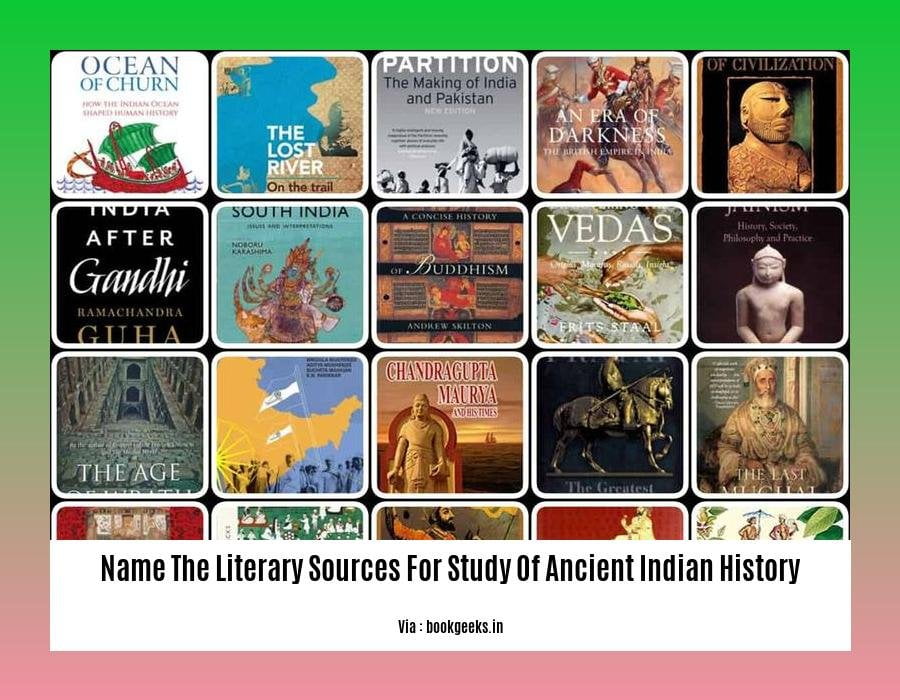
How can religious literature contribute to our understanding of ancient Indian society and culture?
Imagine yourself as a time traveler, strolling through the lively streets of an ancient Indian metropolis. The chanting of Vedic hymns fills the air, blending with the lively conversations of merchants and craftsmen. These revered texts, inherited through the ages, serve as a priceless gateway to unraveling the beliefs, values, and everyday experiences of our ancestors in ancient India.
Unveiling the layers of the Vedas’ complex verses, we uncover the foundation of Indian religious thought. Hymns devoted to various gods and goddesses reveal the intricacies of religious practices and rituals that molded the fabric of ancient Indian society. Through these writings, we witness the unfolding of religious ideas and the emergence of pivotal concepts such as karma and reincarnation.
Beyond unlocking religious insights, the Vedas also illuminate the social and political fabric of ancient India. They shed light on the intricate relationships among different classes and castes, outlining the roles and duties of rulers and citizens. The references to battles and alliances in the Rigveda offer tantalizing glimpses into the political landscape and the rise and fall of powerful kingdoms.
Key Points to Remember:
- Religious texts like the Vedas provide invaluable insights into the spiritual beliefs and practices of ancient India.
- These writings offer a window into the social and political structures of the time, including class divisions and the responsibilities of leaders and their subjects.
- Analyzing literary sources aids in piecing together the intricate tapestry of ancient Indian society, allowing us to better understand its history and evolution.
Additional Reading:
- Sources of Ancient Indian History: Uncovering the Past Through Literature and Archaeology
In what ways do non-Brahmin literature and cosmic literature provide unique perspectives on ancient India?
Have you ever wondered what life in ancient India was like beyond the Brahminical lens? Or explored the vast cosmos through the eyes of India’s ancestors? Non-Brahmin and cosmic literature offer captivating windows into these hidden worlds.
Non-Brahmin Literature: Unraveling Diverse Voices
Think of non-Brahmin literature as a mosaic of voices that didn’t fit the Brahminical narrative. These writings, penned by folks from all walks of life, reveal a vibrant tapestry of experiences. They illuminate the lives, beliefs, and social structures of people who were often left out of the mainstream Brahminical history.
Cosmic Literature: Exploring the Universe’s Symphony
Cosmic literature, like a celestial symphony, transports us into the boundless realms of the universe. From the Vedas to the Puranas, these texts explore the cosmic origins, the very essence of existence, and the intricate dance of celestial bodies. They paint a picture of ancient India’s deep fascination with astronomy, their yearning for spiritual awakening, and their profound respect for the cosmic tapestry.
Unique Perspectives Unveiled
These diverse literary sources unveil a multifaceted view of ancient India. Non-Brahmin literature challenges the Brahminical dominance, offering fresh perspectives on social hierarchy and daily life. Cosmic literature, on the other hand, opens our eyes to the philosophical and religious beliefs that guided India’s thinkers.
Key Insights:
- Non-Brahmin literature provides a counter-narrative to the Brahminical perspective, showcasing the diversity of ancient Indian society.
- Cosmic literature reveals the cosmological and metaphysical beliefs that shaped the ancient Indian mindset.
- Together, these unique sources provide a comprehensive understanding of the social, cultural, and intellectual fabric of ancient India.
Remember, just as a puzzle is completed with each piece, so is our understanding of ancient India enriched by the diverse voices of non-Brahmin and cosmic literature. These hidden gems offer a kaleidoscopic view of a vibrant civilization, inviting us to explore its lesser-known facets and appreciate its enduring legacy.
How do archaeological sources complement literary sources in reconstructing the history of ancient India?
Imagine you’re trying to piece together a jigsaw puzzle of ancient India’s history. Archaeologists are like puzzle solvers who dig up clues from the ground, while writers from back in the day are like storytellers who left us their written accounts. When you put these pieces together, you get a fuller picture of what life was like in those days.
Archaeology: Digging Up the Bits and Pieces
Archaeologists dust off old ruins, statues, pots, and jewelry to tell us about ancient cities, buildings, and people. Think of it like finding pieces of a dinosaur skeleton. Each piece gives us a clue about what kind of dinosaur it was, how big it was, and even what it might have eaten.
Literature: Pages from the Past
Authors from long ago wrote down stories, religious beliefs, and accounts of what was happening around them. These writings are like diary entries from people who lived in ancient India. They tell us about the gods they worshipped, the kings they had, and the everyday lives they led.
When the Two Meet: Piecing Together the Puzzle
When we put archaeological discoveries and written accounts together, it’s like having two different perspectives on the same story. Archaeologists can show us that a city was big, while writers can tell us what it was like to live there. Or, a writer might mention a great battle, and archaeologists can unearth weapons that might have been used in it.
Archaeology Helps Confirm Literature
Sometimes, archaeologists dig up stuff that proves what writers said was true. For example, they found the ruins of a palace described in an ancient Indian epic. That’s like finding a dinosaur tooth that matches the teeth in a dinosaur drawing from an old book.
Literature Gives Meaning to Archaeology
Writings can help us understand what archaeological finds mean. Archaeologists might find a strange-looking building, but writers can tell us that it was a temple for a certain god. It’s like finding a weird rock and then reading a note that says it’s actually a magical healing stone.
Filling in the Blanks
When one source is missing details, the other can fill them in. For example, archaeologists can show us how people lived in a certain area, but writers can tell us what they ate, what they believed in, and who their leaders were.
New Discoveries
By combining these two types of sources, we can uncover new things that neither source could tell us on its own. For example, archaeologists might find evidence that shows ancient Indians knew about math and astronomy, which we wouldn’t know if we only relied on writings.
So, next time you’re curious about the past, remember that archaeologists and writers are like detectives who work together to help us piece together the puzzle of ancient India’s history.
FAQ
Q1: What are the major literary sources for studying ancient Indian history?
A1: The primary literary sources for ancient Indian history include religious texts like the Vedas, Puranas, and epics like the Ramayana and Mahabharata. These texts offer insights into society, culture, religion, and political systems during ancient times.
Q2: How do religious texts contribute to our understanding of ancient Indian history?
A2: Religious texts, such as the Vedas and Puranas, provide detailed accounts of mythology, religious practices, social norms, and philosophical ideas prevalent in ancient India. They aid in reconstructing the beliefs and ideologies that shaped the society and culture of the time.
Q3: What unique insights can epics like the Ramayana and Mahabharata offer?
A3: Epics like the Ramayana and Mahabharata are invaluable sources for understanding the political and social dynamics of ancient India. They narrate the lives of kings and heroes, depict social structures, and provide glimpses of the prevalent values and customs.
Q4: How do accounts of foreign travelers enrich our knowledge of ancient India?
A4: Accounts written by foreign travelers, like Hiuen Tsang and Megasthenes, provide an external perspective on ancient India. They document observations on Indian society, religion, economy, and political systems, offering valuable cross-cultural insights.
Q5: What are the limitations of relying solely on literary sources for historical study?
A5: While literary sources are crucial, they have limitations. They often focus on the elite class and may reflect religious and political biases. Additionally, the accuracy and reliability of some texts can be debated, necessitating a critical evaluation of the sources.
- SYBAU See You Baby Meaning: Gen Z Slang Evolves - July 1, 2025
- Unlock Your Inner Youth: Lifestyle Secrets for a Vibrant Life - July 1, 2025
- Decode SYBAU Meaning: Gen Z Slang Explained - July 1, 2025
